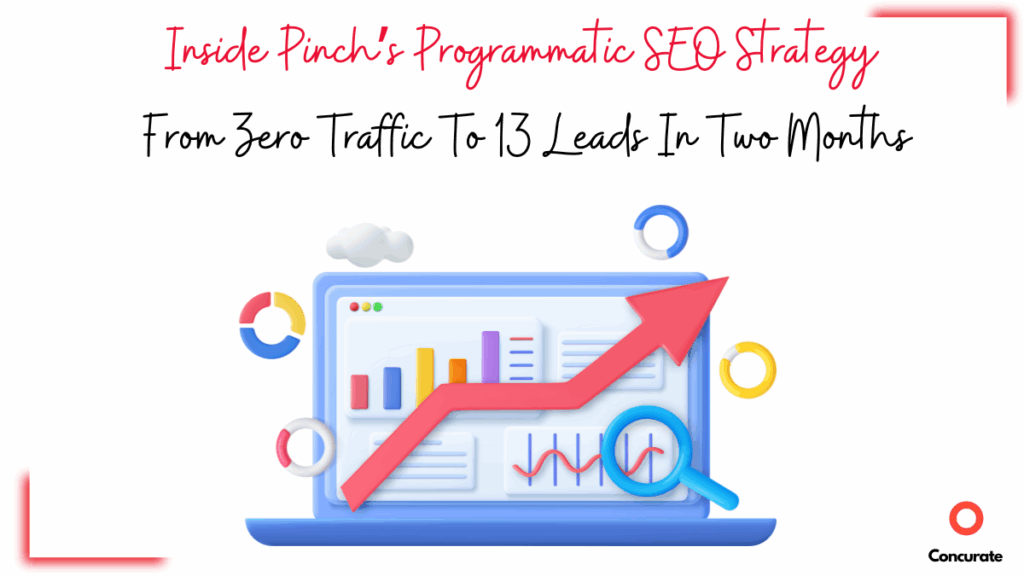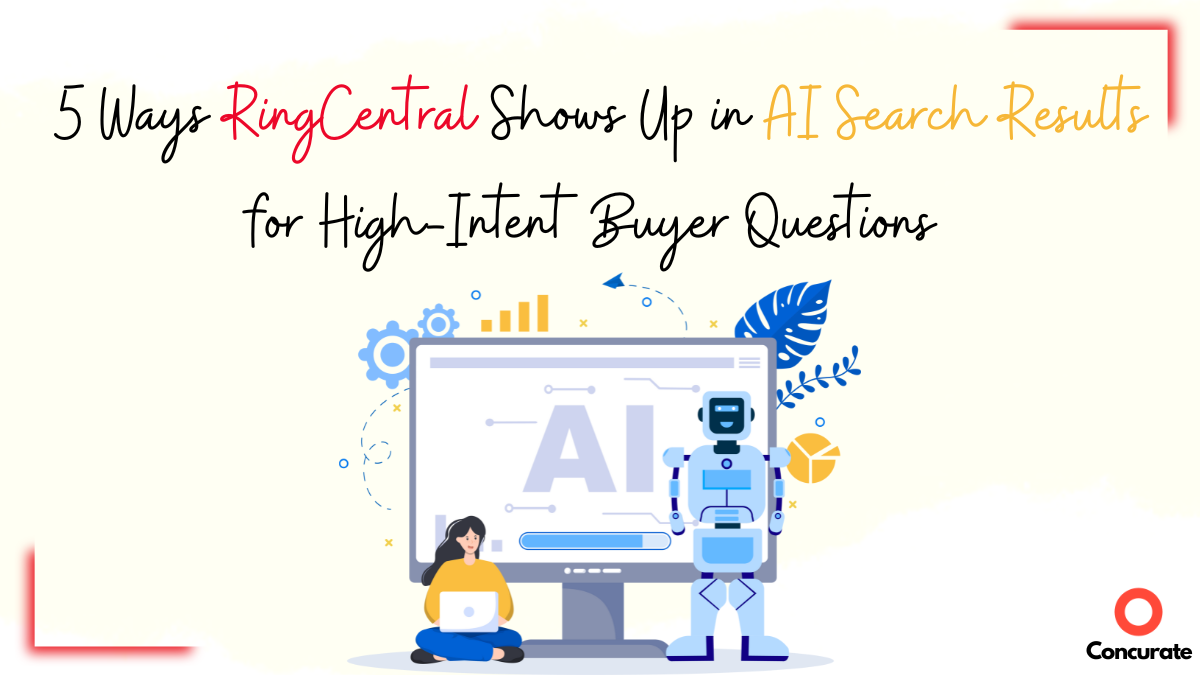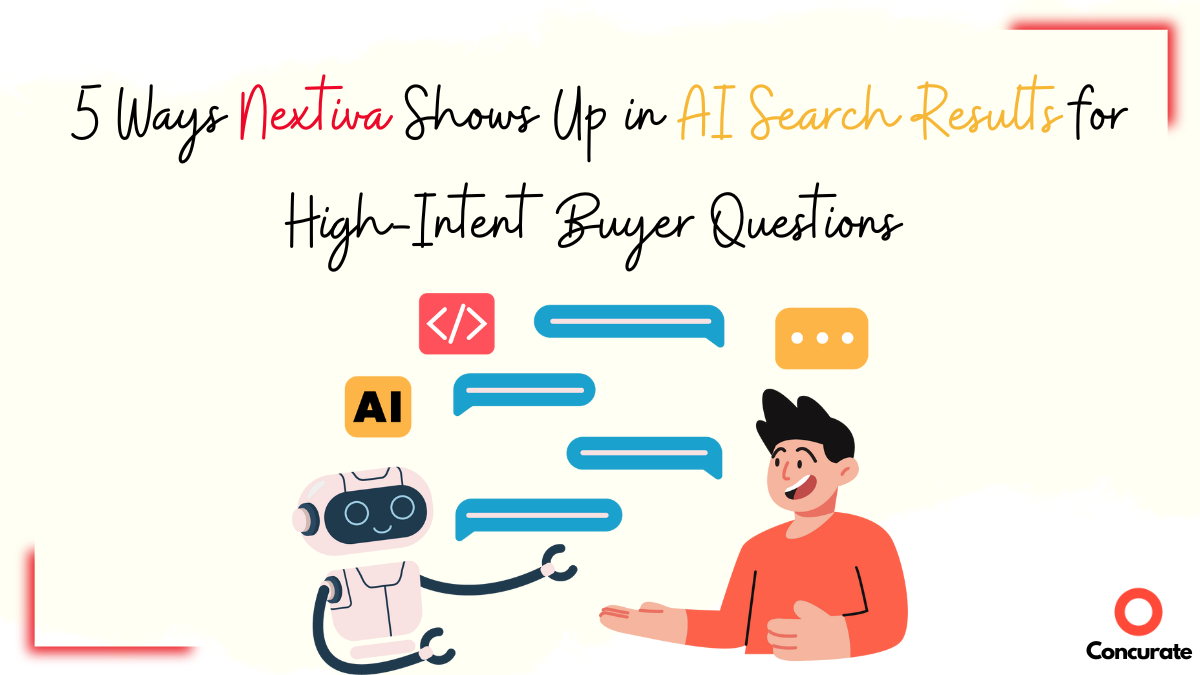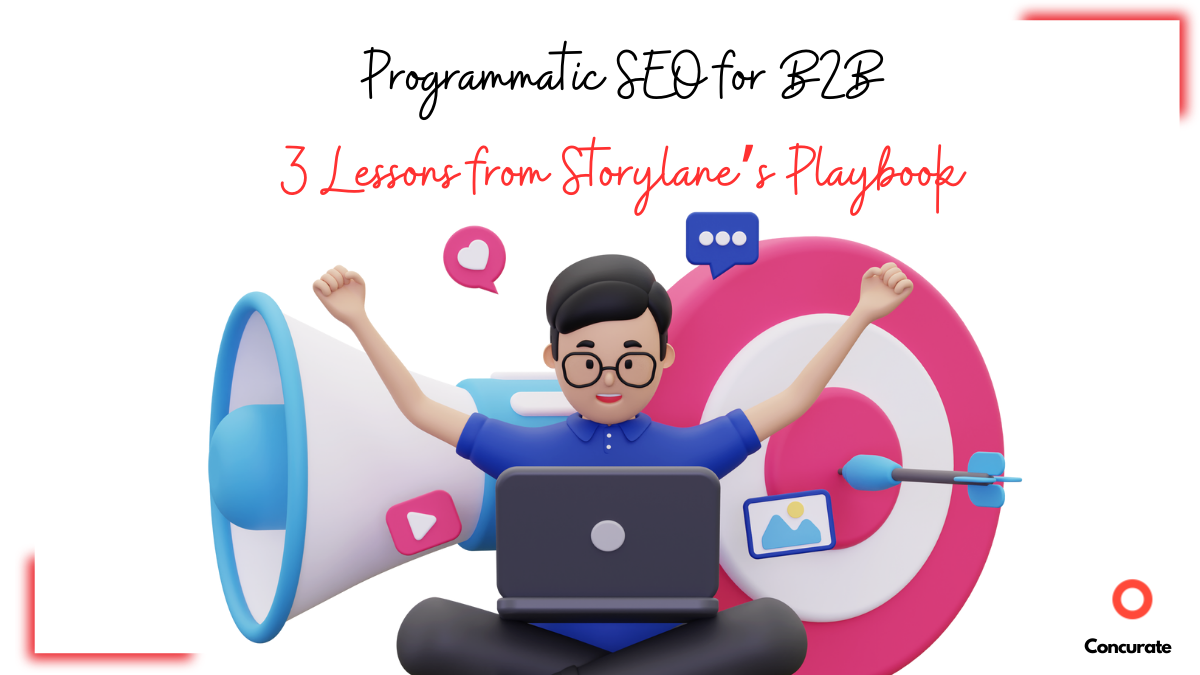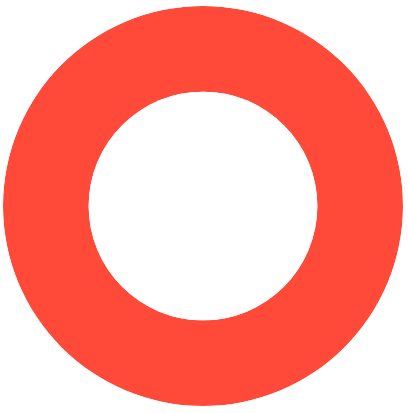Inside the Strategy That Took Pinch From No Visibility To 13 Leads In Just Two Months
| TL;DR: Breaking into a crowded SEO space with zero domain authority is tough for SaaS startups. Our programmatic SEO strategy built topical authority for Pinch and turned compliance-focused blogs into leads from attorneys and IP teams. |
When you’re a new SaaS product entering a space dominated by established players, there’s no middle ground. You either disrupt, or you disappear.
For Pinch Patent Drawings, that was the reality. When they came to us in late April 2025, they had a brand new product and website.
The product was built on a powerful idea, but it needed visibility to match its potential.
And content marketing was their best bet.
But the rules of discovery have changed. With generative engines now shaping how buyers find solutions, ranking on Google alone wasn’t enough. Visibility now meant showing up on both search results and AI surfaces.
For an established domain, the process can be tough. But for a new entrant with a relatively new domain and no SEO history, this was going to be a tough hill to climb.
We like steep climbs. And this is the story of how we took Pinch from being invisible to lead-generating within four months.
What Pinch Came to Us With?
Pinch Patent Drawings was a patent drawing platform designed to make compliance effortless. It gave users a way to generate drawings that matched jurisdiction requirements across major patent offices.
However, they had a sketch of a challenge in front of them. The patent services space had two dominant options:
- traditional illustrators who charged high fees, took weeks to deliver, and required endless back-and-forth when users requested drawings complaint for other patent offices
- generic design tools that weren’t built for patent compliance
Pinch had a different approach. By uploading CAD files, users could instantly convert them into 100% black-and-white, jurisdiction-compliant drawings accepted by major patent offices. That too in minutes and at a very reasonable price.
The product was ready to perform, but the market didn’t know about it yet. Competitors already had decades of SEO history, backlinks, and brand presence.
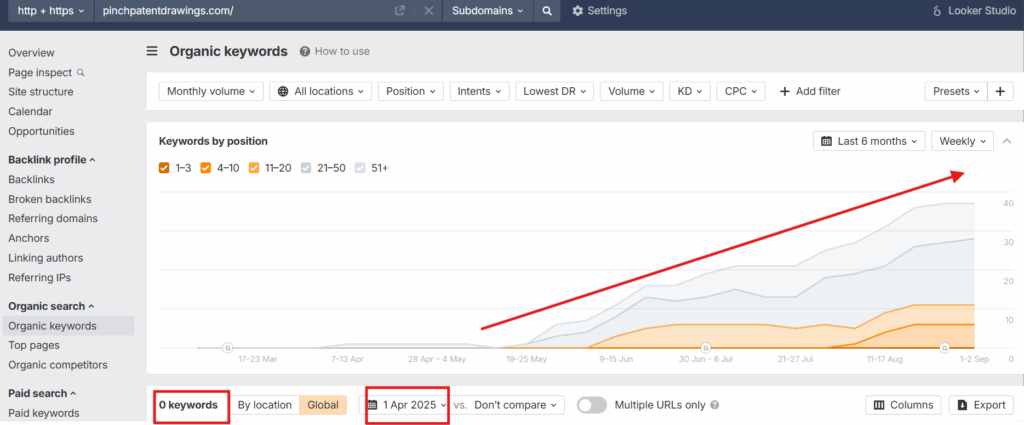
Source – ahrefs
Pinch, being a new website, had zero visibility. And being a new entrant, they weren’t ranking for high-intent keywords.
And most critically, they weren’t reaching the very people they were built for: patent attorneys, inventors, and innovation teams.
They had a stellar product, but no content strategy to support it. And that’s when they came to us.
The Strategy
How do you outrank decades of dominance with a product the world hasn’t heard of yet?
We knew content was the way to do it. But not just any content would do.
We needed precisely engineered content — the kind that appears where it matters most: across top search results and AI Overviews.
As a content marketing agency that’s worked across industries and formats, we’ve seen this playbook succeed before. But Pinch needed a strategy tailor-made for how its customers search, compare, and trust.
We took a two-pronged content approach:
1. Building Topical Authority Around the Tool Itself
We started by targeting high-intent, tool-specific keywords. The kind attorneys, innovation teams, and inventors search when they’re actively exploring alternatives to traditional patent illustrators.
These weren’t vague, top-funnel keywords. These were conversion-ready queries like:
- Best patent drawing software
- Top AI patent drawing tools
- Patent drawing services for inventors
- Common reasons for patent drawing rejections
We created focused blogs around each of these, ensuring every post matched search intent and highlighted how Pinch solves their exact problem.
We also created a comparison piece on SmartDraw alternatives, a well-established competitor that lacked several features Pinch offered.
Our goal was to build topical authority with a tight content cluster that would surface across generative engines and AI-powered search.
But we didn’t stop there.
Recommended Read: 16 Best Generative Engine Optimization Companies That Get You Visible on AI Search Results
2. Dominating Programmatic SEO With Patent Office–Specific Content
We knew the real SEO unlock lay in one insight: Patent drawing requirements vary across jurisdictions. Even small errors, like a 1cm margin difference, can trigger objections or delay a grant.
These requirements are actively searched by attorneys and innovation teams looking to avoid compliance mistakes.
So, we designed a programmatic SEO strategy for Pinch. We planned a series of FAQ-based, jurisdiction-specific posts, all structured the same way, answering the exact questions real filers ask:
- What are the margin rules in the EPO?
- Can I include line shading?
- What paper size is accepted in Australia?
And we didn’t write these casually.
Each article was thoroughly researched in accordance with official patent office guidelines, ensuring compliance, credibility, and rich content.
For instance, the below snippet shows some of the common questions asked around EPO patent drawing guidelines:

Source – Pinch Blog
Another example: USPTO accepts drawing sheets in two standard sizes: A4 (21.0 cm × 29.7 cm) or 8.5 x 11 inches (21.6 cm × 27.9 cm). Most other patent offices, however, accept only A4-sized sheets.
Moreover, the margins differ across patent offices too, as shown in the table below:

Source – Pinch Blog
Here are a few keywords from that series:
- US Patent Drawing Requirements
- EPO Patent Drawing Requirements
- GCC Patent Drawing Requirements
We repeated the same with India, Singapore, South Africa, Malaysia, and more.
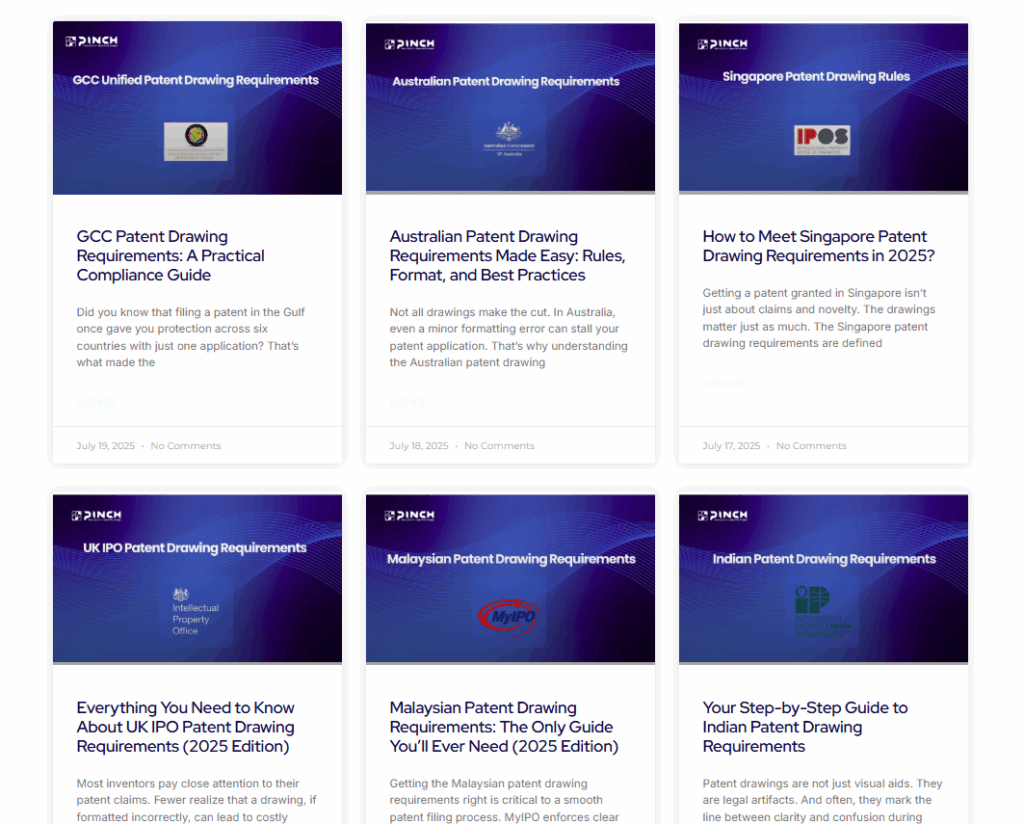
Source – Pinch Blog
With this structured, jurisdiction-based format, we were able to create scale with precision. We covered every major filing region while reinforcing Pinch’s core edge: built-in compliance.
Together, these two content systems — tool-focused blogs + jurisdiction-focused guides, became the engine behind Pinch’s SEO momentum.
Recommended Read: Programmatic SEO Case Study: Helping a Network Training Provider Dominate 60+ Markets and Attract a Major Enterprise Lead
The Transformation
Pinch had zero SEO history when we started. But with a tight, search-intent-aligned content strategy, everything changed.
Within three months, Pinch started ranking for both competitive tool keywords and jurisdiction-specific content. Not just in classic search, but in AI Mode and AI Overviews, the very surfaces shaping how people discover software today.
1. Tool-Focused Content Results
Even in a niche with established players, Pinch’s tool-focused blogs started surfacing across AI Mode and classic search within weeks.
The most competitive query, i.e., Best Patent Drawing Software, reached 4th position. For Top SmartDraw Alternatives and Top Patent Drawing Services, we claimed the #1 spot.
Even exploratory or informational searches like Patent Drawing Rejection Reasons and US Patent Drawing Examples made it into AI Overviews.
Here’s a snapshot of the performance as of Aug 31, 2025:
| Keyword / Article | AI Mode / AI Overview | Google Position |
| Best Patent Drawing Software | Visible | 4 |
| Top SmartDraw Alternatives | Visible | 1 |
| Top Patent Drawing Services | Visible | 1 |
| US Patent Drawing Examples | AI Overview | 9 |
| Top AI Patent Drawing Software | Visible | 16 |
| Patent Drawing Rejection Reasons | Visible | 2 |
2. Jurisdiction-Specific Content Results
This is where our Programmatic SEO strategy for the SaaS really paid off.
By building a programmatic series around real compliance queries, and grounding every article in official guidelines, we didn’t just rank. We dominated AI surfaces for global patent offices.
Out of 13 blogs, 10 surfaced on AI Mode, and 11 ranked in the top 7 results on classic Google search.
This traction wasn’t limited to major markets. From GCC (#1) to Russia (#2) to Singapore (#3), Pinch started showing up where filing decisions happen.
Here’s the breakdown, as of August 31, 2025:
| Article | AI Mode/AI Overview | Google position |
| PCT Drawing Requirements | Visible | 9 |
| US patent drawing requirements | Not Visible | 19 |
| EPO patent drawing requirements | Visible | 3 |
| Germany Patent Drawing Requirements | Visible | 5 |
| Australian Patent Drawing Requirements | Not Visible | 7 |
| GCC Patent Drawing Requirements | Visible | 1 |
| South Africa Patent Drawing Requirements | Not Visible | 2 |
| Canadian Patent Drawing Requirements | Visible | 4 |
| Russia Patent Drawing Requirements | Visible | 2 |
| Indian Patent Drawing Requirements | Visible | 5 |
| Malaysian Patent Drawing Requirements | Visible | 2 |
| UKIPO Patent Drawing Requirements | Visible | 5 |
| Singapore Patent Drawing Requirements | Visible | 3 |
This was true programmatic SEO for SaaS, with AI visibility built-in. That too, blog style.
Recommended Read: Programmatic SEO For B2B: 3 Lessons From Storylane’s Playbook
3. Leads Through Organic Marketing
This strategy didn’t just drive rankings, it brought in qualified leads.
Within two months of connecting Pinch’s website to HubSpot, we began seeing inbound interest directly attributed to our SEO efforts.
No paid ads. No outreach. Just organic content doing its job.

Source – Hubspot
As of August 31, 2025, 13 qualified leads have come through purely from content. These are attorneys, IP professionals, and innovation teams who discovered Pinch through our blogs.
This is the kind of win we love: niche content turning into qualified pipeline.
Pinch’s SEO story proves that even in highly technical markets, and content rooted in real user intent can drive serious traction.
From AI Mode rankings to inbound leads, the results speak for themselves. And the best part is this momentum only compounds from here.
Key Wins
- Ranked on Google AI Mode for 10 out of 13 jurisdiction-focused blogs, including GCC, Singapore, Russia, and the UK.
- Secured the number one spot on Google for competitive tool keywords like “Top SmartDraw Alternatives” and “Top Patent Drawing Services.”
- Achieved first-page rankings for 11 out of 13 compliance blogs, all written from scratch, optimized for search, and grounded in official patent office rules.
- Drove 13 qualified inbound leads through organic content alone, attracting patent attorneys and innovation teams without a single paid campaign.
In a recent conversation, Pinch’s team shared their excitement about the early wins and the long-term value of the SEO strategy. Here’s how they put it:
“We’re seeing real traction from this content. It’s bringing in the right traffic and the right leads. We are super happy with the results we have seen.”
Takeaways
Pinch’s journey proves that programmatic SEO isn’t reserved for big consumer niches. It works just as powerfully in highly technical, and unique niches like IP tech.
Here are the lessons any SaaS or B2B brand can apply from the Programmatic strategy we used for Pinch:
- Start with high-intent, pain-point keywords. The quickest wins come when you target what buyers are actively searching for, even in competitive industries.
- Pair tool-focused content with programmatic scale. Solve immediate buyer needs while also building depth across long-tail, structured topics. That balance creates defensible authority.
- Ground every piece in credible sources. In specialized domains, accuracy builds trust. Content anchored in official references carries more weight with both readers and AI surfaces.
- Make discovery easy for your audience. Complex topics become approachable when you centralize answers in one place, instead of forcing buyers to piece them together across multiple sources.
For SaaS startups and B2B teams, the takeaway is clear: structured, intent-driven content can punch above its weight, even against entrenched competitors.
Execution is where the real difference shows up. And that’s where we come in.
Ready to Unlock Growth With Programmatic SEO
At Concurate, we don’t just write content. We build engines for growth.
This programmatic SEO strategy case study shows what’s possible when search intent, structured execution, and content precision come together.
From zero SEO presence to top rankings and real leads, we turned content into a compounding growth channel.
And we can do the same for you.
Whether you’re a SaaS startup, IP tech platform, or service brand, we can help you create content that ranks, resonates, and converts.
Think: high-performance blogs, ghostwritten thought leadership, LinkedIn content, and SEO strategies designed to win long-term.
If you’re ready to turn content into your biggest advantage, let’s talk. Book your free strategy call today.
FAQs About Programmatic SEO Strategy
1. What kind of team setup is needed to execute a programmatic SEO strategy like this?
A successful programmatic SEO strategy needs tight collaboration across content, SEO, and tech. At minimum, you need:
- A strategist who understands search intent and keyword frameworks.
- A writer who can turn official sources into credible, digestible content.
- An SEO expert to map clusters, optimize for AI Mode, and track performance.
- A dev or Webflow/WordPress expert to create and maintain scalable landing page templates.
If you’re a lean team, an agency like Concurate can cover all these roles and speed up execution. Contact our team to know more.
2. Is AI Mode visibility really valuable if most clicks still go to classic search results?
Yes. AI Mode visibility puts your brand at the top of the discovery funnel. It influences trust, click intent, and even gets quoted downstream in AI answers. In the Pinch case, showing up in AI Mode helped position the brand as credible before the user even clicked. It’s not about chasing vanity spots at the end of the day. It’s about compounding visibility across surfaces that matter now and in the future.
3. Can you use blogs in a programmatic SEO strategy, or does it only work with landing pages?
Absolutely, blogs are a great fit, especially for knowledge-driven niches like IP, compliance, or SaaS. In fact, the Pinch strategy used blogs as the primary format to target jurisdictional queries.
When structured right, blog clusters can rank for hundreds of long-tail variations, surfacing in AI Overviews, and even earning backlinks. So yes, blogs can power programmatic SEO, it’s all about structure and intent.


